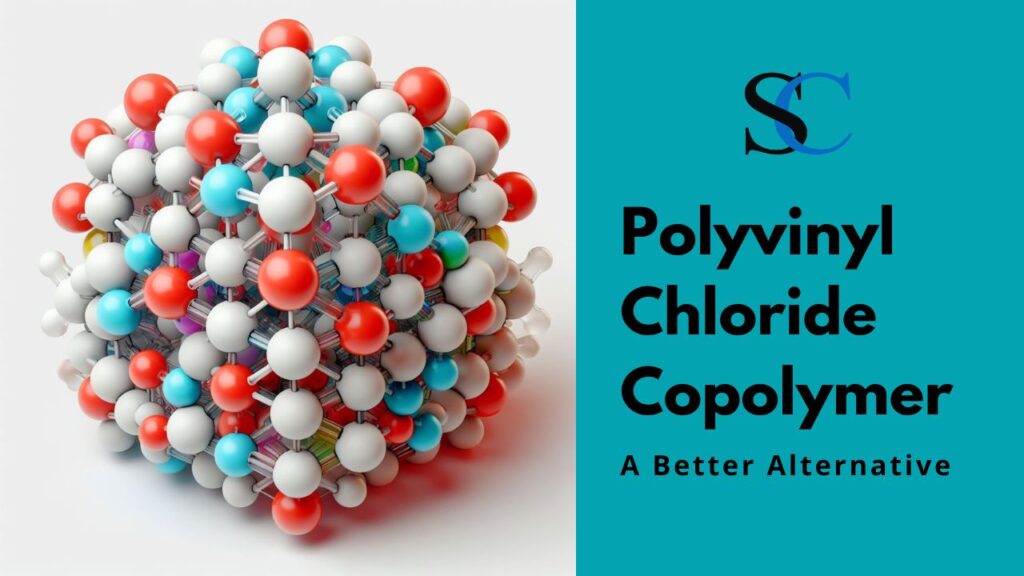Polyvinyl Chloride Copolymer, often abbreviated as PVC copolymer, is a versatile polymer derived through the copolymerization of vinyl chloride monomers with additional comonomers, typically ethylene or propylene. This unique composition grants PVC copolymer a balance of rigidity and flexibility, making it suitable for a diverse range of applications across industries. Known for its cost-effectiveness, durability, and resistance to various environmental factors, PVC copolymer is widely utilized in construction, healthcare, electronics, automotive, packaging, and agriculture. Its adaptability and favorable properties contribute to its status as a go-to material in the world of polymers.
I. Introduction
A. Understanding Polyvinyl Chloride (PVC)
Polyvinyl Chloride, commonly known as PVC, ranks among the most widely used plastics globally due to its combination of plastic and vinyl, offering durability and versatility. However, when it comes to specific applications, traditional PVC may not be the best choice.
B. The Introduction and Evolution of Polyvinyl Chloride Copolymer
Enter PVC Copolymers. These upgraded versions of PVC were invented when scientists began experimenting with adding different molecules to the PVC mix. The result? A superior, more resilient form of PVC, that goes by the name Copolymer.
C. Purpose of the Article: Evaluating PVC Copolymers as a Better Alternative
On a quest to analyze PVC Copolymer’s potential as a better alternative, this article delves into the science, benefits, applications, and environmental impact of PVC Copolymers.
II. Exploring Polyvinyl Chloride Copolymer: The Science Simplified
A. What are Copolymers?
Bonds made in polymer heaven, copolymers are the result of the marriage between two or more different types of monomers. This union results in an enhanced material with the best properties from each parent monomer.
B. Different Types of Copolymers: Random, Alternating, Block, and Graft
Copolymers come in various forms. ‘Random’ where the units are mixed;. ‘Alternating’, where the pattern follows an ABAB rule; ‘Block’, where there are large chunks of each unit; and ‘Graft’, which, much like a tree, has branches of one kind attached to a backbone of another.
C. How PVC Copolymers Differ from Traditional PVC
Unlike traditional PVC, PVC Copolymers come with enhanced properties due to the addition of varying monomers. This makes them more adaptable, flexible, and capable of withstanding harsh surroundings.
III. Benefits of Polyvinyl Chloride Copolymer: A Better Alternative

A. Improved Flexibility and Durability
Thanks to their unique combination of monomers, PVC Copolymers enjoy heightened flexibility and durability compared to traditional PVC.
B. Resistance to Environmental Factors
PVC Copolymers are like the Superman of the polymer world, resisting UV radiation, acid rain, heat, and other destructive environmental elements.
C. Superior Aesthetics and Design Capabilities
The versatility of PVC Copolymers makes them a designer’s dream. They can be molded and shaped in ways limited only by creativity.
IV. Applications of Polyvinyl Chloride Copolymer in Various Industries
A. Healthcare Sector: Medical Devices and Equipment
Thanks to their safety and durability, PVC Copolymers are widely used in the healthcare industry for things like heart valves, blood bags, and tubing.
B. Construction Industry: Enhanced Building Materials
Construction is going green and PVC Copolymers are paving the way. They offer superior strength, flexibility, and environmental resistance.
C. Automotive Industry: Durable, Lightweight Components
PVC Copolymers are helping cars shed weight and gain performance. They are also helping car manufacturers thanks to their ease of manufacturing and design flexibility.
V. Sustainability and Environmental Impact
A. Reduced Production Footprint
PVC Copolymers production leaves a smaller carbon footprint compared to traditional PVC.
B. Recyclability and Biodegradability of PVC Copolymers
These materials can be recycled several times without losing their performance properties, and some even have the ability to biodegrade over time.
C. Addressing Environmental Concerns: Myths and Facts
Much of the stigma around PVC Copolymers’ environmental impact is based on old data. Today, manufacturers are making strides to make the production process greener and PVC Copolymers more sustainable.
VI. Future Outlook: Potential and Challenges of PVC Copolymers
A. Technological Advancements and Innovations in the Field
With new technology and improvements in production processes, the future of PVC Copolymers looks bright.
B. Regulatory Aspects and Compliance Challenges
Regulations around plastic production and disposal are becoming stricter. While this may pose a challenge, companies embrace it as an opportunity to innovate.
C. Market Potential and Competitive Landscape
As more industries realize the potential of PVC Copolymers, the market for these materials is set to explode.
VII. Conclusion of Polyvinyl Chloride Copolymer 
A. Recap of the Benefits and Applications of PVC Copolymers
In a nutshell, PVC Copolymers offer superior performance, design flexibility, and a greener footprint. This makes them apt for a range of industries.
B. Why PVC Copolymers are a Promising and Better Alternative
With their superior properties and potential, PVC Copolymers make a highly compelling case as a better alternative.
C. Closing Thoughts on the Future of PVC Copolymers
The sky’s the limit for PVC Copolymers. As technology advances and the world seeks greener materials, PVC Copolymers are set to be a frontrunner.
VIII. FAQs of Polyvinyl Chloride Copolymer
A. Answering Common Questions about PVC and PVC Copolymers
- Is PVC safe? Yes! Contrary to some beliefs, PVC can be made safe for use in the home and even in medical equipment.
B. Addressing Environmental Concerns and Misconceptions
- Are PVC Copolymers biodegradable? While not all, some PVC Copolymers are biodegradable, and all can be recycled several times.
C. Where to Learn More about PVC Copolymers and their Potential Use
To learn more about PVC Copolymers and their potential, I recommend visiting materials science journals or the websites of manufacturers in the field.



